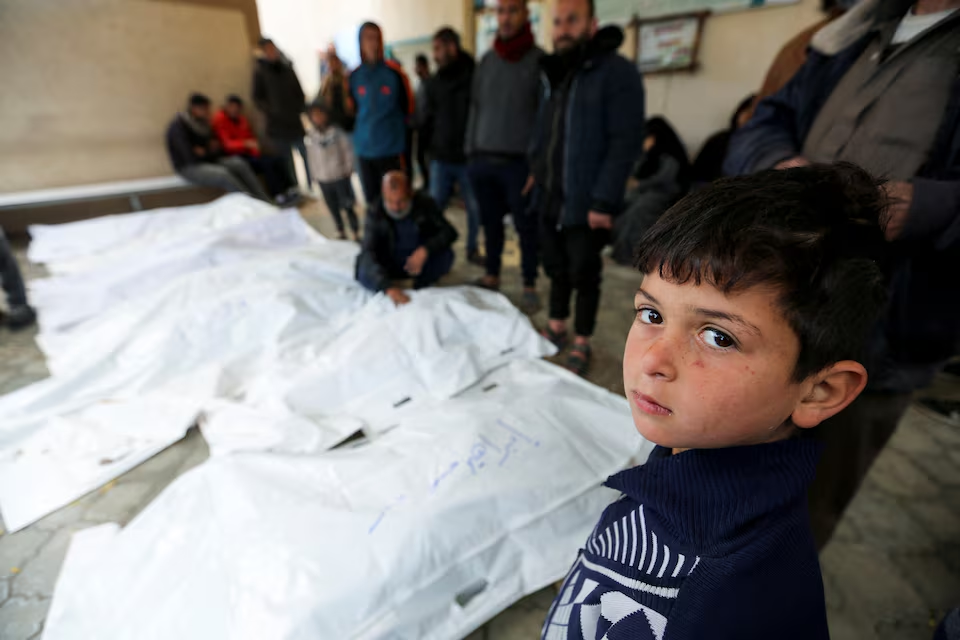The fragile peace that had held Gaza for two months shattered this week as Israel resumed its military operations, launching a devastating air and ground campaign against Hamas, the dominant Palestinian militant group in the region. The renewed violence has left 91 Palestinians dead and dozens wounded, according to Gaza’s health ministry, marking one of the deadliest escalations in the 17-month-long conflict.
The End of the Ceasefire
After two months of relative calm, the ceasefire between Israel and Hamas effectively collapsed on Tuesday, with Israel resuming airstrikes and ground operations. The military campaign has been relentless, with hundreds of airstrikes targeting residential neighborhoods and key infrastructure. On the first day alone, over 400 Palestinians were killed, one of the highest single-day death tolls since the conflict began.
The ceasefire, which had been brokered by international mediators, had offered a brief respite to the people of Gaza. Families like that of Huda Junaid had returned to the ruins of their homes, camping amidst the rubble in a desperate attempt to rebuild their lives. But the renewed violence has forced them to flee once again, packing their few remaining belongings onto donkey carts and searching for safety.
“We don’t want war, we don’t want death. Enough, we are fed up. There are no longer children in Gaza, all of our children are dead, all of our relatives are dead,” Junaid told Reuters, her words echoing the despair of countless others.
Evacuations and Ground Operations
As the airstrikes intensified, Israeli aircraft dropped leaflets over residential areas, ordering evacuations from towns in northern Gaza, including Beit Lahiya and Beit Hanoun, as well as the Shejaia district in Gaza City and parts of Khan Younis in the south. Late on Thursday, Israel announced it had begun ground operations in the Shaboura district of Rafah, a city on the Egyptian border.
The Israeli military also stated that it was expanding a buffer zone known as the Netzarim corridor, which separates the northern and southern halves of Gaza. Residents were warned to avoid the Salahuddin road, Gaza’s main north-south route, and to travel along the coast instead.
For many Gazans, the return of war has brought back the horrors of displacement and death. Samed Sami, a 29-year-old father who fled Shejaia, set up a tent for his family in an open camp. “War is back, displacement and death are back. Will we survive this round?” he asked, his words reflecting the uncertainty and fear gripping the region.
Hamas Responds
Hamas, which had refrained from retaliating during the first 48 hours of the renewed Israeli assault, eventually fired rockets into Israel. The Israeli military reported that sirens sounded in central Israel as projectiles were launched from Gaza. However, some Gazans noted that there were no visible signs of Hamas preparing for a full-scale resumption of fighting.
An official from a militant group allied with Hamas, who spoke on condition of anonymity, revealed that fighters had been put on alert and instructed to stop using mobile phones, likely to avoid detection. The group also condemned Israel’s ground operations and incursion into the Netzarim corridor as a “new and dangerous violation” of the ceasefire agreement.
The Human Cost
The human toll of the conflict continues to mount. According to Gaza’s health authorities, more than 49,000 Palestinians have been killed since the war began in October 2023, when Hamas militants attacked Israeli communities near the Gaza border, killing 1,200 people and taking over 250 hostages.
This week’s strikes have also dealt a significant blow to Hamas’s leadership, killing several top figures, including the de facto head of the Gaza government, the chief of security services, and the deputy head of the Hamas-run justice ministry.
Political and Regional Implications
The resumption of full-scale war complicates the political landscape for both sides. In Israel, public support for the conflict is waning, with protesters accusing Prime Minister Benjamin Netanyahu of prolonging the war for political gain and endangering the lives of remaining hostages. Military reservists, too, are reportedly experiencing burnout.
For Hamas, the stakes are equally high. The group has called for mediators to “assume their responsibilities” and reaffirmed its commitment to the ceasefire agreement. Hamas seeks to move to a second phase of the deal, which would require Israel to negotiate an end to the war, withdraw its troops from Gaza, and exchange Israeli hostages for Palestinian prisoners.
Israel, however, has only offered a temporary extension of the truce and has cut off all supplies to Gaza. The military campaign, it says, is aimed at forcing Hamas to release the remaining hostages.
Regional Tensions
The conflict has also drawn in regional actors. On Thursday, the Israeli military intercepted two missiles fired from Yemen, one in the early hours and another in the evening. The Iran-aligned Houthi forces in Yemen have occasionally launched missiles at Israel in solidarity with Palestinians in Gaza.
A Desperate Plea for Peace
As the violence escalates, the people of Gaza are left to bear the brunt of the suffering. Families like Huda Junaid’s, who had hoped to rebuild their lives amidst the ruins, are once again displaced, searching for safety in a land ravaged by war.
“We don’t want war, we don’t want death,” Junaid pleaded, her voice a poignant reminder of the human cost of conflict. For the people of Gaza, the dream of peace remains elusive, as the cycle of violence continues unabated.
The international community faces an urgent challenge: to broker a lasting ceasefire and address the root causes of the conflict. Until then, the people of Gaza remain trapped in a devastating cycle of death and displacement, their cries for peace echoing across a shattered land.


